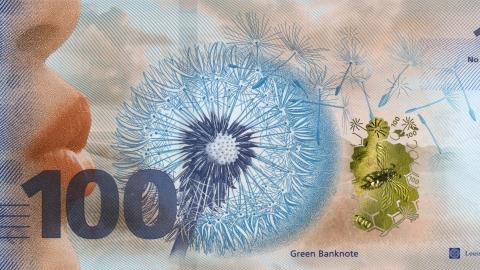Rethinking Cash: The Move Towards Sustainable Banknotes
Despite the rapid advancements in digital banking, cash continues to be the most widely used currency globally. This fact raises an important question: how can we make cash more environmentally friendly?
To explore this issue, we spoke with Alexandra Geiger, the head sustainability engineer at G+D Currency Technology, regarding the Green Banknote Initiative launched by her company.
In March 2022, G+D established the Green Banknote Initiative to motivate central banks and currency issuers to enhance the sustainability of banknote production and to lower carbon emissions. Geiger emphasizes that G+D, as a producer of cash, felt a duty to create banknotes that reflect ecological responsibility. Since its inception, the Initiative has garnered significant interest and positive feedback.
This initiative serves as an "open-dialogue platform" aimed at all cash issuers, focusing on making banknotes greener across multiple aspects—from fiber cultivation and banknote design to the production and circulation processes. The ultimate goal is to minimize the carbon footprint and reduce resource consumption in the lifecycle of banknotes.
Geiger cites a report from the Bank of England, which reveals that approximately 67% of its carbon emissions are linked to the supply of banknotes. In contrast, G+D’s Green Banknote has a significantly lower carbon footprint of just 7.8 grams of CO2 per note, encompassing everything from fiber cultivation and material transport to manufacturing and printing.
The company has identified opportunities to enhance the sustainability of the fibers used in banknote paper, the inks for printing, and the plastic elements of current banknotes. The Green Banknote is constructed from 100% natural renewable fibers, comprising 50% organic cotton and 50% FSC-certified wood pulp sourced from local regions. This cotton is sustainably cultivated in countries like Turkey and Greece, utilizing minimal fertilizers and pesticides to achieve a 63% reduction in carbon emissions. Additionally, there is potential to incorporate sustainable cotton from Africa without significantly affecting costs compared to traditional materials.
Geiger elaborates on the initiative’s focus on reducing plastic use: "The Green Banknote features a thinner polymer layer than conventional hybrid banknotes, resulting in a 30% reduction in plastic per note." This innovation not only decreases material costs but also lowers transport fuel consumption due to the notes’ reduced weight.
Furthermore, G+D has introduced the first mineral-oil-free inks for banknote printing. The Green Banknote retains essential security features, such as watermarks, which are integrated with carrier foil composed of 70% recycled polyethylene (PET). The use of natural fibers allows for various security enhancements, ensuring that these banknotes remain secure and trustworthy for the public.
Durability plays a critical role in sustainability, Geiger explains, noting that longer-lasting banknotes can significantly reduce carbon emissions throughout their lifecycle. The development of a hybrid substrate aims to achieve greater durability while minimizing plastic usage.
Geiger highlights the necessity of collaboration within the Green Banknote Initiative, stressing the importance of partnering with central banks and currency issuers to foster greener cash development and address the end-of-life solutions for banknotes. She emphasizes the need for sustainable methods to recycle or repurpose discarded banknotes, recognizing that while they cannot be reused to create new notes, alternative sustainable applications should be explored.
Looking ahead, Geiger is optimistic about the growing demand for eco-friendly currency, driven not only by increased interest from financial services but also by central banks’ evolving policies towards sustainability.
"The Green Banknote can be integrated into existing processing systems, avoiding the need for central banks to invest in new machinery, thus supporting the overall sustainability journey," she adds.
In the face of a global shift towards digital payments, Geiger advocates for both cash and cashless options to adopt sustainable practices. She acknowledges the merits and drawbacks of each while underscoring the inclusivity of cash as a payment method.
"Every effort counts in combating climate change. The Green Banknote Initiative represents a collective effort among various stakeholders to address this pressing issue."
For those interested in exploring further advancements in sustainable finance, Finextra will host its fifth Sustainable Finance Live conference and hackathon on November 29. More information and registration details are available on the event page.
